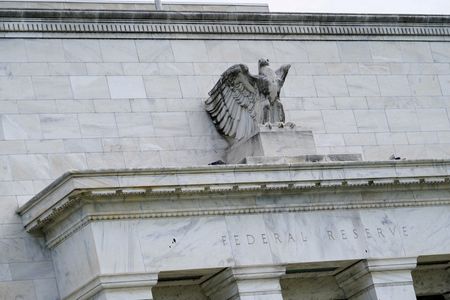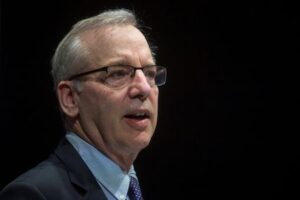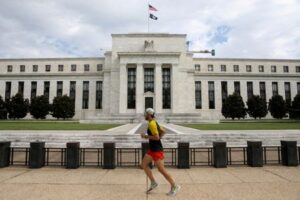By Naomi Rovnick and Dhara Ranasinghe
LONDON (Reuters) – Interest rate cuts from major central banks are well underway, with the European Central Bank on Thursday delivering its second quarter-point cut of the year.
Half of the 10 big developed market central banks tracked by Reuters have now started easing policy, and the U.S. Federal Reserve is likely to join the club next week.
Here’s where major rate setters stand and what traders expect next.
1/ SWITZERLAND
The Swiss National Bank, the first among Western peers to lower borrowing costs in March, cut rates again in June to 1.25%. It has signaled it intends to keep going.
Futures markets view another cut on Sept. 26 as certain, with 28% odds of a 50 basis point (bps) move, after annual inflation dropped to 1.1% in August. Outgoing SNB chair Thomas Jordan believes a stronger franc threatens exports.
2/ CANADA
The Bank of Canada implemented its third consecutive cut on Sept. 4 to 4.25% and another 25 bps reduction in October is almost fully priced.
Canada’s economy is slack, strong population growth has helped lift unemployment to 6.6% and the BoC has mused about inflation undershooting its 2% target.
3/ SWEDEN
Sweden’s Riksbank, which started cutting rates in May after its successive hikes crushed inflation but weakened the economy, is tipped to lower borrowing costs by at least another 25 bps on Sept. 25.
Swedish rates stand at 3.5% but annual inflation has steadied at below the Riksbank’s 2% target.
4/ EURO ZONE
The ECB cut rates again on Thursday as euro zone inflation slows and the economy falters. It provided almost no clues about its next step, even as investors bet on steady policy easing in the months ahead.
Money markets priced in roughly 40 bps of further easing by year-end and a roughly 42% chance of another 25 bps cut in October.
5/ BRITAIN
The Bank of England is expected to keep benchmark borrowing costs at 5% on Sept. 19, following its first cut of this cycle in August.
Stubborn services inflation suggests the BoE will ease more slowly than the Fed and the ECB. Markets price just one more quarter point cut in 2024, probably in November.
6/ NEW ZEALAND
A convention for quarterly instead of monthly GDP and inflation data has baffled New Zealand’s central bank and domestic market watchers.
The Reserve Bank of New Zealand in August cut rates for the first time this cycle to 5.25%, a year earlier than its own projections had stated. Markets forecast another quarter point drop in October.
7/ UNITED STATES
The next Fed rate decision is on Sept. 18 and markets are gripped by the prospect of the first U.S. rate cut since 2020.
Policymaker comments signal a cut is coming without suggesting one is needed because the economy is teetering on recession.
Money markets reckon a 25 bps reduction next week is more likely than a bigger 50 bps cut after data on Wednesday showed some stickiness in underlying inflation.
Traders price roughly 100 bps of easing by year-end while economists polled by Reuters forecast 75 bps worth.
8/ NORWAY
Norway’s central bank, which meets next week, is in the hawkish camp.
It left rates on hold at a 16-year high of 4.5% in August and said a tight stance would likely be needed for “some time” to curb inflation, still running above the bank’s 2% target.
Markets only fully price in a first rate cut in December, meaning Norway’s easing cycle will likely start well after peers.
9/ AUSTRALIA
The Reserve Bank of Australia has held rates at 4.35% since last November and believes inflation is still sticky, although data suggests the economy is struggling.
Markets do not see more than 50% odds of a rate cut until December.
10/ JAPAN
The Bank of Japan is the outlier, raising rates twice this year as inflation rises.
Its July rate increase caught markets off guard, exacerbating a sell-off in Japan’s stocks and a surge in the yen. The BoJ says it will tread carefully to ensure volatile markets do not hurt businesses. It is expected to leave rates unchanged at 0.25% next week. Markets and economists anticipate another increase by year-end.
(Reporting by Naomi Rovnick and Dhara Ranasinghe; Graphic by Sumanta Sen; Editing by Mark Potter)





